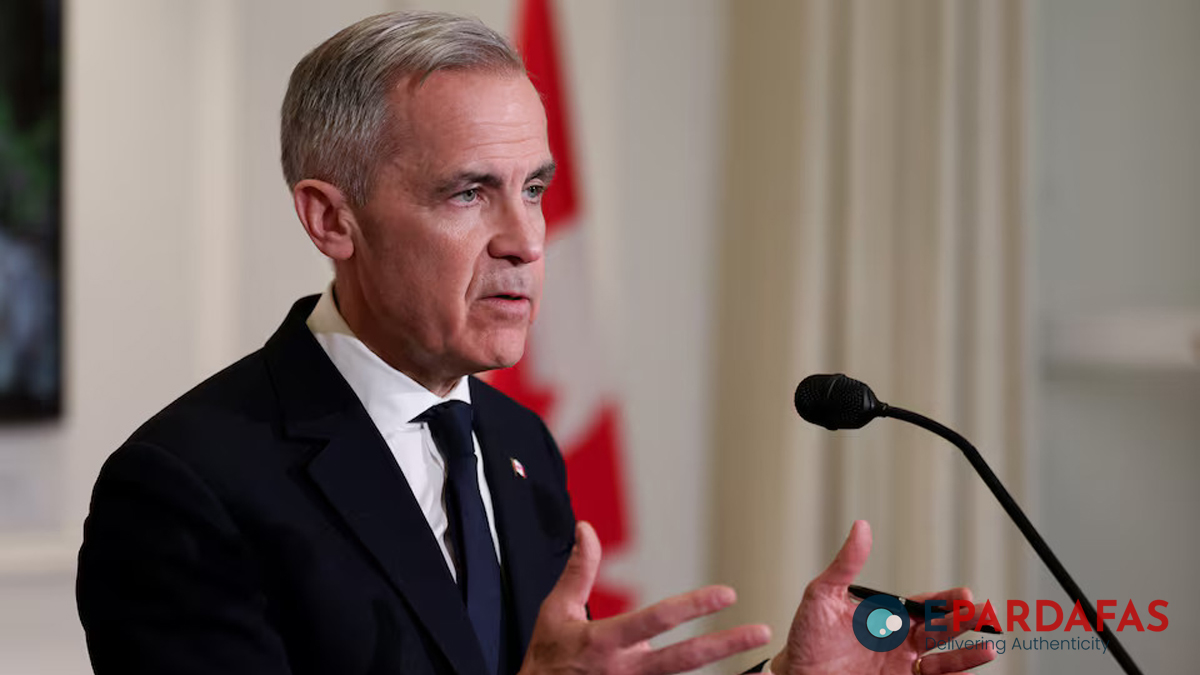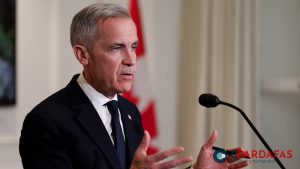
Carney Leads Liberals Ahead of Crucial Canadian Election
Four weeks before Canadians head to the polls for a general election, Mark Carney has led a Liberal resurgence, overtaking his main rival, Conservative Pierre Poilievre, in the race for prime minister. The election has been dominated by concerns over U.S. President Donald Trump’s threats against Canada’s economy and sovereignty.
Since taking office in January, Trump has threatened high tariffs on Canadian goods and repeatedly suggested that Canada should surrender its sovereignty and become part of the United States. Experts believe that the main issue for voters on April 28 will be who—current Prime Minister Carney or Poilievre—can best push back against Trump.
“The economy is the biggest issue for me in this election, including the whole free trade thing with the United States,” Ottawa voter Carol Salemi told AFP. “We need some sort of negotiation (with the U.S.) and we need a strong leader to do that,” she said.
Danielle Varga, 22, echoed that sentiment, saying Canada needs “someone that’s strong against America. It feels like everyone’s on that same page, which is good.”
At the moment, Carney, a former central banker and political newcomer who took over from Justin Trudeau in mid-March, appears to fit the bill. The 60-year-old has revitalized the Liberals, reversing their fortunes from what seemed like an inevitable electoral wipeout under Trudeau.
Carney is now leading in the polls and, according to observers, has a strong chance of forming a majority government. “This is the most important election of our lifetime,” Carney told campaign volunteers in Ottawa on Saturday. “It’s critical in redefining our relationship with the United States (and) redefining our economy on our own terms.”
Carney briefly interrupted his campaign this week after Trump announced plans to impose 25 percent tariffs on Canadian car imports, following earlier levies on steel and aluminum. The two leaders spoke on Friday, with Trump describing the call as “extremely productive” and stating that they “agree on many things.”
This marked a stark change in tone compared to Trump’s frosty dealings with Trudeau, a shift that was immediately noticed in Canada.
Meanwhile, Poilievre has launched his campaign with a focus on tax cuts, affordable housing, and the development of Canada’s natural resources. The 45-year-old career politician has sought to distance himself from comparisons to Trump, as both are right-wing populists—a factor that has hurt his appeal among Canadian voters.
“President Trump has said he wants the Liberals back in power. We know why, because they will keep Canada weak and keep our investment flowing out of this country, to the U.S.,” Poilievre said at a campaign stop in Toronto on Sunday.
Other parties, including Jagmeet Singh’s leftist New Democratic Party and Yves-François Blanchet’s separatist Bloc Québécois, have struggled to gain traction as voters focus on the two frontrunners. “This is truly an exceptional time for Canada,” said Ottawa University politics professor Geneviève Tellier. “Canada is looking for a savior.”
Carney’s firm stance on U.S.-Canada relations appears to be resonating with voters. After Trump’s latest tariff announcement, Carney declared that the era of deep economic, security, and military ties between Canada and the U.S. “is over.” Tellier noted that Carney’s “firm tone” has “captured the current mood in Canada,” while McGill University’s Daniel Béland added that voters are turning to Carney because “they want security and a reassuring figure in times of crisis.”
With 343 parliamentary seats at stake in a country of 41 million people, the party that wins a majority will form the next government, and its leader will become prime minister. If no party wins a clear majority, the party with the most seats will be invited to form a coalition government with smaller parties.













Comments